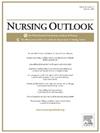制定政策公平影响评估工具
IF 3.7
2区 医学
Q1 NURSING
引用次数: 0
摘要
为消除护理教育中历史上根深蒂固的不平等现象,需要从公平的角度审视政策和决定。政策公平影响评估工具(EIAT)旨在分析政策和决策的影响,以创造更公平的结果。目的:本文的目的是描述一所护理学校与创伤知情教育实践相一致的EIAT政策的发展和实施。方法回顾文献和现有的用于教育、社会公正、组织和政府设置的政策公平影响评估,以开发一个工具来帮助决策和政策制定和修订。开发的工具考虑了政策的受益者和负担者、意外后果、社区成员参与以及如何减轻创伤和伤害。该工具可适用于其他护理教育项目和实践环境。结论EIAT政策有可能创造更公平的政策,消除护理教育中的结构性种族主义。本文章由计算机程序翻译,如有差异,请以英文原文为准。
Development of a policy equity impact assessment tool
Background
Efforts to eradicate historically rooted inequities in nursing education require examining policies and decisions through an equity lens. Policy equity impact assessment tools (EIAT) are designed to analyze impact of policies and decisions to create more equitable outcomes.
Purpose
The purpose of this article is to describe the development and implementation of a policy EIAT in a school of nursing that aligns with trauma-informed educational practices.
Methods
Literature and existing policy equity impact assessments used in educational, social justice organizational, and governmental settings were reviewed to develop a tool to aid decision-making and policymaking and revision.
Findings
The tool developed considers who benefits and is burdened by a policy, unintended consequences, community member involvement, and how to mitigate trauma and harm.
Discussion
This tool can be adapted to other nursing education programs and practice settings.
Conclusion
A policy EIAT has the potential to create more equitable policies and to dismantle structural racism in nursing education.
求助全文
通过发布文献求助,成功后即可免费获取论文全文。
去求助
来源期刊

Nursing Outlook
医学-护理
CiteScore
6.20
自引率
7.00%
发文量
109
审稿时长
25 days
期刊介绍:
Nursing Outlook, a bimonthly journal, provides innovative ideas for nursing leaders through peer-reviewed articles and timely reports. Each issue examines current issues and trends in nursing practice, education, and research, offering progressive solutions to the challenges facing the profession. Nursing Outlook is the official journal of the American Academy of Nursing and the Council for the Advancement of Nursing Science and supports their mission to serve the public and the nursing profession by advancing health policy and practice through the generation, synthesis, and dissemination of nursing knowledge. The journal is included in MEDLINE, CINAHL and the Journal Citation Reports published by Clarivate Analytics.
 求助内容:
求助内容: 应助结果提醒方式:
应助结果提醒方式:


